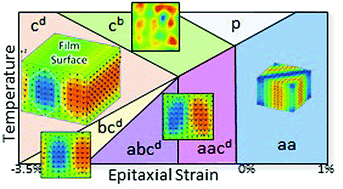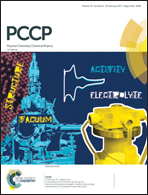Novel high-temperature ferroelectric domain morphology in PbTiO3 ultrathin films
Abstract
Exotic domain morphologies in ferroic materials are an exciting avenue for the development of novel nanoelectronics. In this work we have used large scale molecular dynamics to construct a strain-temperature phase diagram of the domain morphology of PbTiO3 ultrathin films. Sampling a wide interval of strain values over a temperature range up to the Curie temperature Tc, we found that epitaxial strain induces the formation of a variety of closure- and in-plane domain morphologies. The local strain and ferroelectric–antiferrodistortive coupling at the film surface vary for the strain mediated transition sequence and this could offer a route for experimental observation of the morphologies. Remarkably, we identify a new nanobubble domain morphology that is stable in the high-temperature regime for compressively strained PbTiO3. We demonstrate that the formation mechanism of the nanobubble domains morphology is related to the wandering of flux closure domain walls, which we characterise using the hypertoroidal moment. These results provide insight into the local behaviour and dynamics of ferroelectric domains in ultrathin films to open up potential applications for bubble domains in new technologies and pathways to control and exploit novel phenomena in dimensionally constrained materials.



 Please wait while we load your content...
Please wait while we load your content...